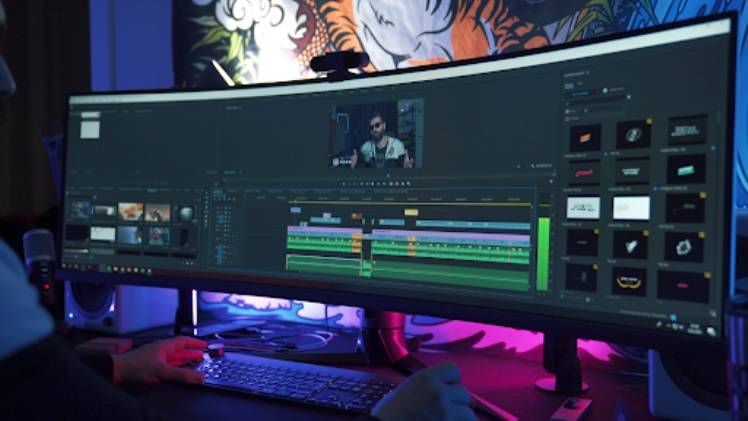
With milestones acting as road gates and requiring permission to pass from one step to the next, animation is a meticulous process. On the other hand, live-action is more like surfing and adjusting to the conditions; everything is adjustable until the camera starts shooting.
Choosing a suitable video form for a product is a hot topic for all business owners. For your forthcoming video marketing project, which one should you choose? Live-action or animated video?
Remember that explainer videos are crucial to promoting your product or service while you work on your marketing plan. The most fantastic live-action explainer video or animated video may help you finish your task.
While animation videos may convey all emotions, live-action videos, for example, might make it simpler to express a message that is accessible or evoke empathy and compassion. Some are frequently better suited, while animation may energize a crowd, clarify complex concepts, and wow viewers. When comparing live-action to animation, there are undoubtedly a lot of benefits and drawbacks, which we’ll go over in more detail below.
Main Differences Between Live-Action vs. Animation Videos
One of the most crucial elements of strategy and planning is selecting the right video style, whether live-action or animation. However, you should think about the demographic you want to target, your marketing objective, and the message you want to convey. Think about it for a while.
The initial creative approach used to build the campaign, message, concept, and story was the same. But this is where the similarities end. Let’s look more closely at these variances.
Animation Videos
Animation is a method for giving the appearance of motion to still pictures. Traditional animation entails manually painting or sketching images on sheets of translucent celluloid, which are subsequently photographed and filmed. Computer-generated images (CGI) are used in most modern animations.
Live Action Videos
In live-action videography, photography is used in place of animation. Instead of computer-generated or fixed visuals, it features actual people, animals, or things. These characters aren’t animated but are utilized in an animated setting.
Budget is vital when looking at live-action vs. animation
The most apparent element, and the one that will have the most considerable influence on the quality of your live-action or animation production, is your money.
The beginning prices for live-action and animation vary greatly depending on what you want to create.
Your budget is probably going to be rather significant if you want to make an hour-long cinematic experience that promotes a premium brand all over the world. Similarly, your budget can be considerably smaller if you’re a startup with a small workforce wanting to engage an audience on social media.
We must consider the amount of time, energy, and flexibility you are willing to devote to the project, as well as your preferences for the production process and the practical logistics involved in the videography procedure.
The Animation Process
The steps in a typical animation process are as follows:
- Innovative idea
- Writing scripts
- Storyboarding for animation
- Sound editing
- Voice overs
- Music
Whether you choose an agency with a group of designers and animators or a lone freelancer, the timing for everything might change. Before too much hands-on production starts, a professional animation or video production business can offer constructive, collaborative input. This should ensure high-quality products, whether animated or filmed (or both), coupled with stability and a qualified team.
The Live-Action Process
There are some similarities to animation, but there are also some significant distinctions.
The animation process and live-action generally go in the same direction:
- Creative
- Scriptwriting
- Storyboarding
- Production of a stage or scene (filming)
- Logistics
Post-production
- Incorporating visual effects in editing
- Music
- Sound effects
- Voice overs
It’s not always the case that live-action takes more time and effort than animation because of the added demand to film in an actual location and all the logistics accompanying it. The live-action alternative may be very quick and affordable if your live-action video merely requires you to film yourself at your business, maybe demonstrating the usage of a specific product you want to promote. However, using high-quality animation is frequently simpler and more effective for illustrating software, technology, and the advantages of service.
Live Action and Animation Pros and Cons
Now that we have a general understanding of what both live-action and animated videos need from us, let’s look at the potential benefits and drawbacks of each.
While both live-action and animation have advantages, the ideal form for you mostly depends on the environment in which you are working. To illustrate this concept, let’s analyze one more aspect: scriptwriting.
Therefore, the main distinction between a live-action and an animated script is that an animated script often requires a more in-depth scene description. This is not always a drawback; on the contrary, it makes it possible to be quite specific about the visual upfront rather than allowing space for interpretation on the day of the live-action production. Why not allow for some interpretation? Although it may indicate a potential for some improvisation and artistic flare, it may also add unnecessary danger if you are on a tight schedule or budget that day.
This illustration demonstrates the importance of context in the debate between live-action and animation. Investigate the possibility of fusing live-action and animation as well.
The Choice
The choice: live-action vs. animation? The production’s objectives and needs ultimately determine whether live action or animation should be used. Live action might be ideal if realism and authenticity are essential considerations. However, animation can be the best option if flexibility and inventiveness are more crucial. The budget, the time limits, and the target audience should also be taken into account. Check out this joint project for some ideas, and good luck with your choice.



